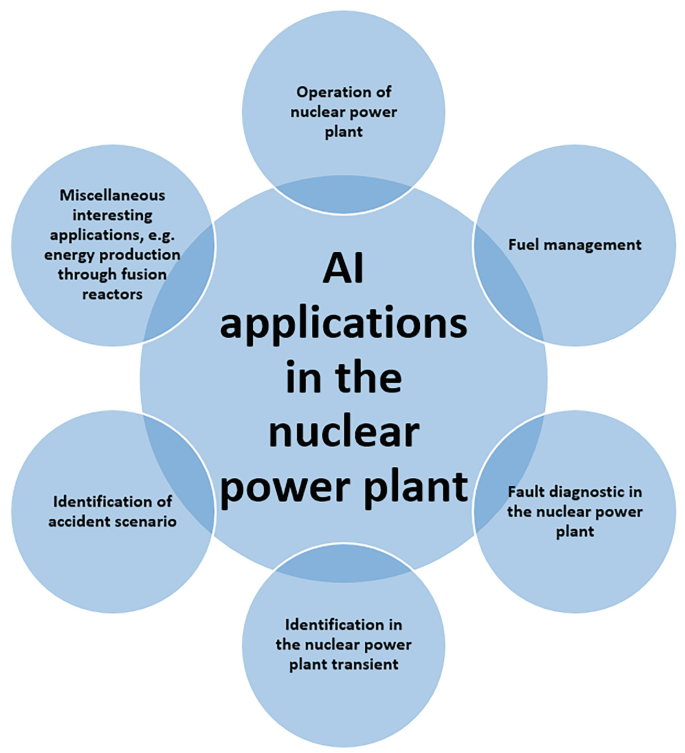Amid global energy transition and the rise of artificial intelligence (AI), the convergence of nuclear energy and AI is emerging as one of the most strategic breakthroughs in the energy sector. AI is not only transforming how nuclear plants are designed, operated, and regulated—it is also being positioned as a critical solution to workforce shortages, construction delays, and safety challenges in the industry. At the same time, tech giants’ large-scale investments in nuclear energy signal the formation of a low-carbon infrastructure for the AI era.

The Power-Hungry AI Boom and the Return of Nuclear Energy
The explosive growth of generative AI has triggered serious concerns over electricity supply. Tech firms like Meta, Google, and Microsoft are rapidly expanding their data centers, and the training and inference of AI models are placing mounting pressure on electric grids. According to Axios, the U.S. Energy Information Administration (EIA) estimates that by 2030, AI data centers could consume over 10% of total U.S. electricity—making it one of the country’s largest electricity consumers after transportation and manufacturing .
Due to its stability, carbon-free output, and high capacity factor, nuclear power is quickly becoming one of the most attractive energy sources for the AI age. In 2024, Meta signed a 20-year power purchase agreement (PPA) with Constellation to supply nuclear electricity to its Illinois data centers. Google, on the other hand, is investing in small modular reactor (SMR) deployment through startups like TeraWatt and Oklo across the U.S. Midwest.
Traditional nuclear projects often suffer from high costs and extended delays. To counter this, Westinghouse has partnered with Google Cloud to leverage the Vertex AI platform, using generative AI to streamline reactor modeling, construction planning, and materials management—with the aim of reducing build times from 10 years to under 5.
In parallel, Palantir and the newly established The Nuclear Company are co-developing an AI system called the Nuclear Operating System (NOS). This platform supports new U.S. reactor projects using data-driven digital twin technologies to cut costs and improve construction control.
The Idaho National Laboratory (INL) is collaborating with AWS to develop digital twin models for SMRs using SageMaker and Bedrock platforms. These models enable real-time monitoring, adaptive control, and predictive maintenance of reactors, enhancing both efficiency and risk forecasting.
Meanwhile, Oak Ridge National Laboratory and startup Atomic Canyon have launched FERMI (Foundation for Engineering, Regulatory, and Manufacturing Intelligence)—an AI model that automates nuclear facility license reviews, reducing regulatory burden and accelerating project approvals.
The U.S. nuclear industry is facing a looming talent crisis. According to the Department of Energy, over 370,000 skilled workers are expected to leave the sector within the next 20 years. In response, Argonne National Laboratory has introduced the PRO-AID AI system, which mimics the reasoning processes of veteran nuclear engineers to support new hires with decision-making and accelerate training, mitigating knowledge loss.
Government efforts are also ramping up. In July 2025, the U.S. Department of Energy will host the AI × Nuclear Executive Summit, positioning AI as a key innovation engine for nuclear—spanning licensing, operations, safety, and waste management.
Meanwhile, private sector investments are aligning. According to TechTarget, Meta, Microsoft, and Amazon have collectively invested hundreds of millions in nuclear power procurement and technology development, aiming to secure their energy-intensive AI infrastructure with low-carbon solutions.
Despite the momentum, the integration of AI and nuclear still faces significant challenges:
Cost and Technological Uncertainty: Both AI development and nuclear projects are capital-intensive and require years of iteration to mature.
Safety and Ethical Governance: Transparency, accountability, and public acceptance of AI-led nuclear decisions require robust regulatory frameworks.
Cross-sector Collaboration Barriers: Communication gaps between AI engineers and nuclear experts remain a bottleneck, demanding sustained efforts in mutual understanding.
Yet under the dual pressures of energy transition and climate neutrality, the fusion of AI and nuclear has the potential to reshape the global clean energy landscape. From fast-deploying SMRs to autonomously managed digital reactors, the outline of a smarter, safer, and more sustainable nuclear future is already taking shape.